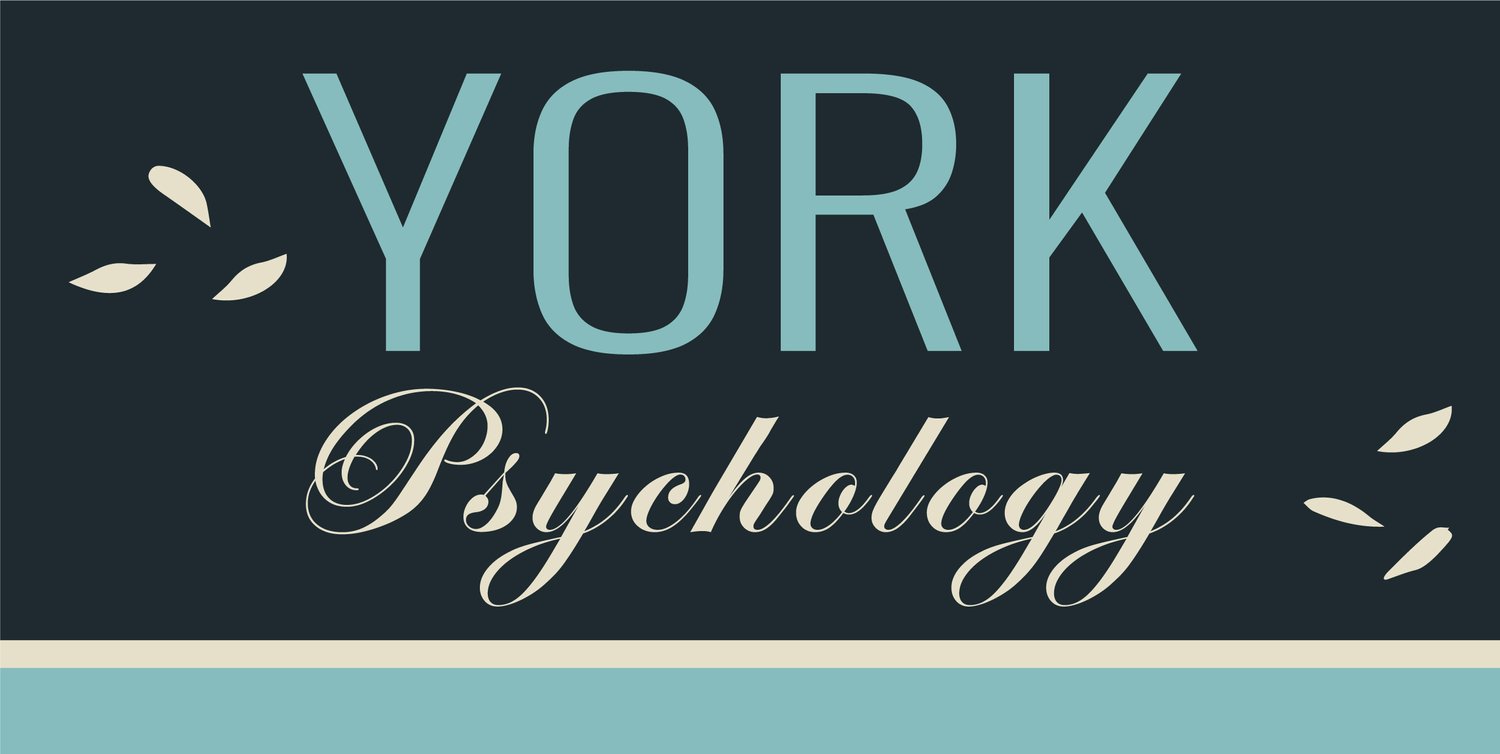How to Manage Daily Stress and Feel Better
Emotional regulation and completing the stress cycle. Emotions are important - but what do they have to do with burnout? In this blog from Calgary Provisional Psychologist Laurel York, learn about the connection between the stress cycle and emotional regulation, including tips you can use to beat stress and heal from burnout.
What do emotions have to do with it?
We can’t talk about burnout without talking about emotions (see my previous post on Burnout 101). Emotions are important - they’re the instant and automatic reactions we have to stimuli around us. They provide us with information about what’s happening in our environment. We all know the responses we feel in our bodies that let us know we are experiencing emotional responses - anger, happiness, sadness, fear, disgust, or excitement. These emotions also produce felt-reactions in our bodies - that’s how we know what we’re feeling. Fun fact: those reactions typically only last 90 second or less. If left to their own devices, emotional responses and their corresponding physical reactions, will run their course on their own. Your attention will shift, the physical responses die out, and you’ll return to baseline. We often use phrases in the therapy world, like, You’ve got to feel it to heal it. This is true. Letting emotions run their course is important to ensure that they don’t get stuck in your nervous system. Otherwise, they can show up as physical symptoms or even secondary emotions like anxiety, guilt, or shame.
The feeling your feelings step is often where problems happen - you often don’t have time, safety, or privilege to let a full emotional response happen in real time. Working in a helping profession often means you’ve been trained to “be a professional first” (I hate this phase). You’re not allowed to bring your emotions to work (anything other than happy, anyway). You can’t break a sweat during hard conversations or crisis responses, you have to put on a stoic face. That’s fine - but it means that sometime afterward, you need to make time to revisit that stressor and emotional response to let it move through your nervous system. E
Ways to Manage Stress and Emotions
Feel it to heal it is one of the ways that you can care for your nervous system and beat the odds of developing burnout. Make time to check in with yourself daily, especially when you have experienced big stressors. Notice how your body feels, or what emotions come up. Take time to notice them without judgment.
Complete your stress cycle. Taking time to address your nervous system helps you move from fight/flight/freeze and back to baseline. This helps burn off the stress hormones your body has been kicking out to get you through the big stressors in your day. Here are some ways you can complete your stress cycle:
physical activity - do something that gets your heart rate up (20-60 minutes is optimal, but do what is reasonable for you)
breathing exercises - focus on short breaths in and long breaths out through your mouth. A good technique is 4-7-8: inhale for 4 seconds, hold for 7, exhale for 8
positive social interaction - connect with your people who love and support you
physical affection - hug your partner, your kids, or pet an animal. This gets oxytocin (the love hormone) flowing so that you feel connected to your love ones
laughter or a big cry - get those emotions out. Watch your favourite shows or read something that makes you laugh or cry
creative expression - art, photography, music, dance - all of these can help you move through your emotions
muscle tension/relaxation exercises - tense your muscles and hold for 10 seconds, moving from head to toe. Repeat as needed. This can be a great exercise to try if you are too tired to exercise.
play - engage in a hobby or activity that you enjoy and can lose yourself in, something you do just for fun.
If this resonates with you, and you find yourself saying, “YES! This is exactly what I’m going through! What do I do about it?” then please reach out. I’d love to connect with you and support you to learn more about your nervous system and how you can take care of it. Click here to book a session or email me at laurel@yorkpsychology.org.
*Information in this post is largely drawn from Burnout: the Secret to Unlocking the Stress Cycle by Emily & Amelia Nagoski, which you can find here: https://www.emilynagoski.com/home
Burnout 101: The Science Behind Chronic Stress
Burnout 101 - Explaining the science behind burnout: what it is stress? Why does it happen? How do I manage burnout and feel better? In this post, you’ll learn about the science of stress and how to recover from feeling burned out.
What is Burnout?
Burnout is a topic that I’m passionate about, because it’s one of the most pervasive problems I see helping professionals wrestle with. Most people have a general sense of what it is or what it feels like. In this post (and the ones following), I’m going to explain a little bit of the science behind burnout: what it is and why it happens. The more you know about your nervous system and how to regulate it, the better chance you have of taking care of it and combatting burnout in your own life.
A little history: burnout as a concept was coined by psychologists in the 1970’s, specifically by Herbert Freudenberger. He defined it as a technical term that has 3 parts: emotional exhaustion, depersonalization, and a decreased sense of accomplishment. To break it down further: emotional exhaustion is the fatigue you experience from caring too much, for too long. Depersonalization is the depletion of feelings like empathy, caring, and compassion (the term compassion fatigue applies here). A decreased sense of accomplishment leaves you with an unconquerable feeling of futility, like nothing you do matters or is making any difference. Here are some some clues that you might be experiencing burnout:
you’re emotionally exhausted - you’re sleeping at night, but don’t wake up rested and you still feel emotionally stressed in the morning
you feel like you’re losing empathy for others
you don’t have the emotional energy to put into people or things that you love
If you’re like any of the helping professionals I know, you’ve experienced one or more of these aspects that contribute to burnout - maybe even all three. Dr. Emily W. King describes it as “the feeling of the consequences in your body when you’re holding on to stress.” This comes from being stuck in a low level, persistent stress cycle that just doesn’t turn off. You can feel the stress in your body and you just can’t seem to shake it.
The Purpose of Stress
Stress is a normal part of the human experience. From an evolutionary perspective, stress is good and serves the function of keeping us alive. Responses like fight, flight, fawn, and freeze? These are all important actions your body uses, by design, to keep you safe under circumstances of threat. For example, this is super useful when you see a bear and you need to decide quickly if running away, fighting back, or playing dead gives you the greatest odds of making it out of the encounter alive. The amygdala, a structure in your brain, is like a threat detector. It goes off to alert the rest of your brain and body that something is happening that needs a response. This cues the rest of your nervous system to take action. Your sympathetic nervous system shifts into gear - your heart rate and blood sugar levels increase, immune system kicks in, and you’re ready to spring into action. When the stressor is dealt with, your parasympathetic takes over and you recover from the stressful incident. Digestion resumes, healing can happen, and you get back to a resting state because your body knows it is safe again.
When Stress Becomes a Problem
It becomes a problem, however, when normal, non-life threatening (e.g. not a deadly bear) stressors keep you stuck in a state of arousal or alarm - your sympathetic nervous system keeps responding to the stressors you’re experiencing. Things like email alerts, looming paperwork deadlines, a dreaded meeting with your boss or tough clients, or the energy it takes to emotionally regulate the people in your care - they all add up. Instead of processing the stress chemicals that help you survive the metaphorical bear, they stay in your body. If you were fighting or running from a real bear, you would physically use up the stress chemicals to help you survive. Instead, your nervous system becomes overtaxed because your stress responses are constantly in an “on” position. Your brain can’t tell the difference between real threats or imagined ones, so it starts to treat all stressors the same way - as big problems that need a big response. (I could get more into the brain/body science, but I won’t here. An excellent, reader-friendly resource is “Burnout: the Secret to Unlocking the Stress Cycle” by Emily & Amelia Nagoski. Check it out here - https://www.emilynagoski.com/home )
So, now you know a little more about the neuroscience behind stress and burnout. What can you do about it? Stay tuned - l’ll address this in my next post on how to complete the stress cycle.
If any of this resonates with you, and you find yourself saying, “YES! This is exactly what I’m going through! What do I do about it?” then please reach out. I’d love to connect with you and support you to learn more about your nervous system and how you can take care of it. Click here to book a session or email me at laurel@yorkpsychology.org.
*Information in this post is largely drawn from Burnout: the Secret to Unlocking the Stress Cycle by Emily & Amelia Nagoski.


